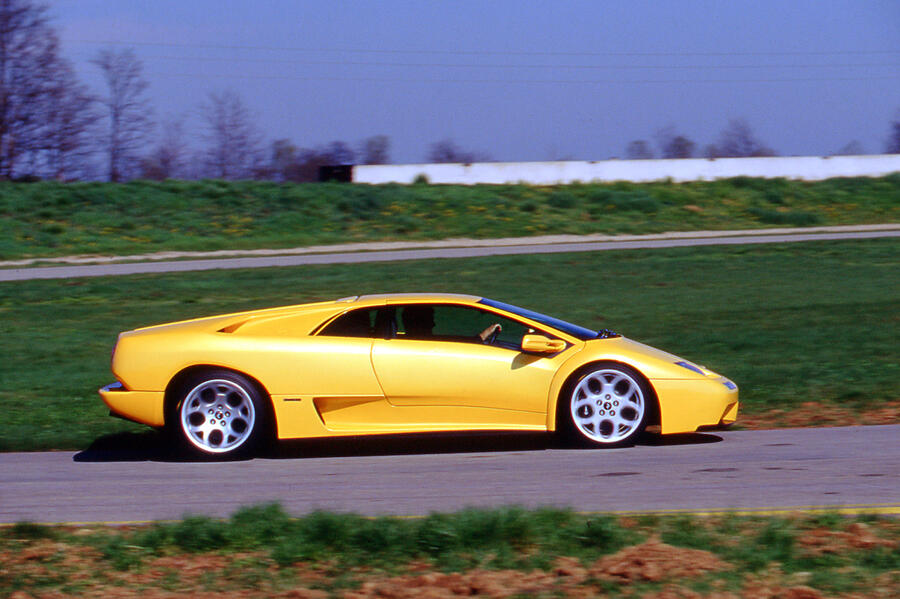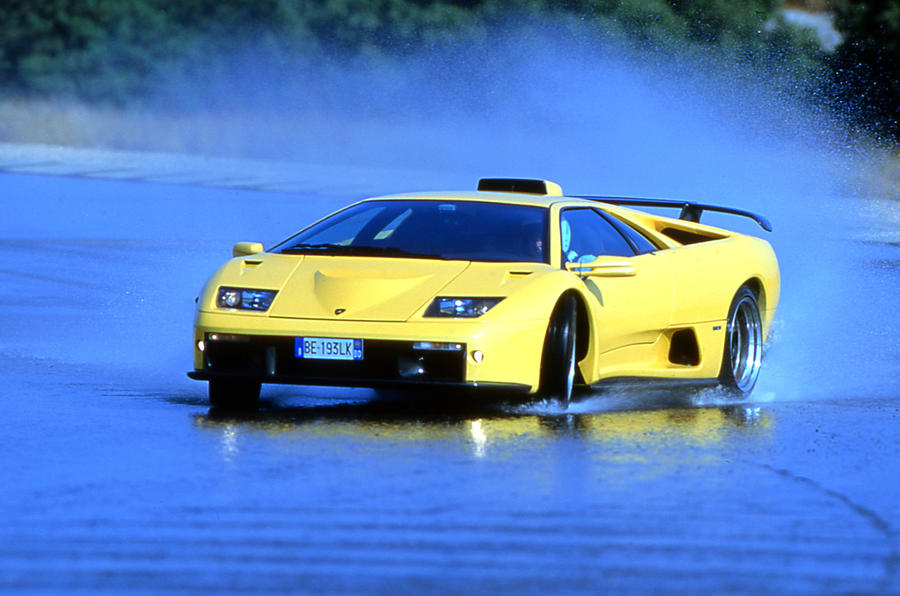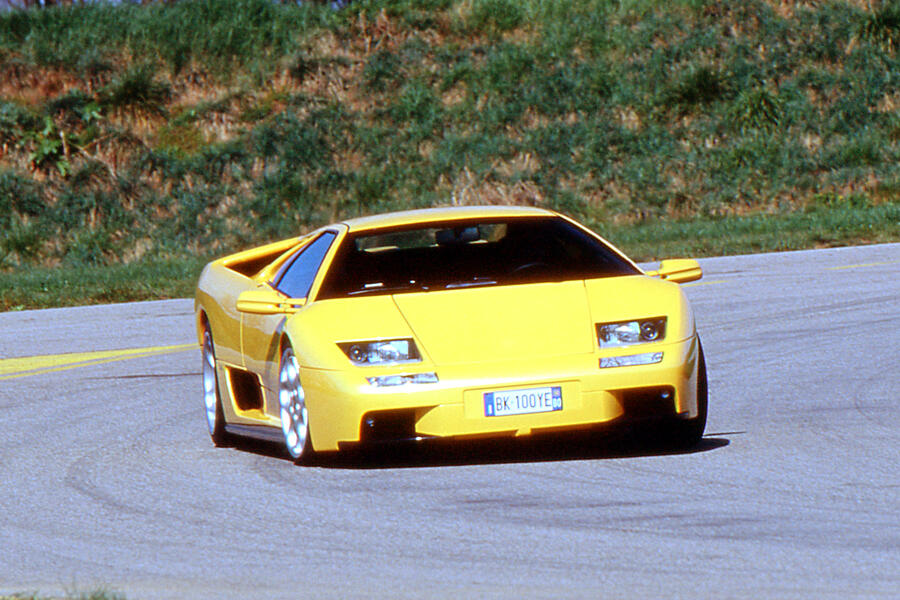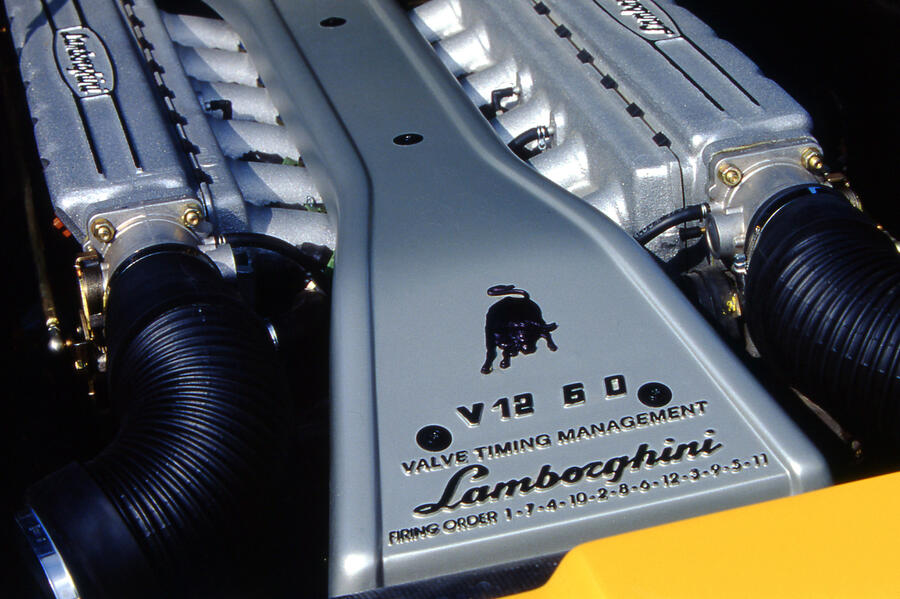News of the reborn Lamborghini Countach prompts memories of the original’s successor, the Diablo. Launched in 1990, it was offered in coupé and roadster forms and powered by a 485bhp mid-mounted 5.7-litre V12. The top speed was 202mph and 0-62mph took 4.5sec, making it, at the time, the fastest car in the world. The Diablo is the archetypal Italian supercar: difficult to drive, impractical – and magnificent.
Happily, prices aren’t as steep as you may think. For example, we found a 1993-reg Diablo with an unusually high 60,000 miles, on sale for £125,000. We tracked it down to a workshop where £11,000 has just been spent making it road-ready.
The example in question is a ‘basic’ 485bhp model. Between the Diablo’s launch and 1998, when Audi assumed ownership of Lamborghini, various versions of the model’s 5.7-litre V12 emerged, ranging in power from 485bhp in regular rear-wheel-drive and four-wheel-drive VT models, through 510bhp in rear-drive SV versions to 523bhp in rear-drive SE30 and 595bhp in SE30 Jota models. The SE30 was a street-legal racer launched in 1993 to celebrate Lamborghini’s 30th anniversary. The more powerful, track-only Jota variant was the fastest Diablo of all.

A facelift came in 1999. Key changes included fixed lenses in place of the earlier pop-up headlights and a redesigned dashboard with an integrated instrument display. At the same time, the 5.7-litre engine gained variable valve timing, sending the power of SV and VT models to 528bhp. Meanwhile, the SE30 and SE30 Jota models gave way to the track-focused Diablo GT, which was powered by a 6.0-litre V12 producing 575bhp. (A GTR variant had 590bhp.)
In 2000, Audi signed off an updated Diablo VT. Changes included a new nose with larger air intakes and a special design of 18in OZ alloy wheels. It was powered by a 550bhp version of the GT’s 6.0-litre engine and followed by the VT SE, a run-out model.
















Join the debate
Add your comment
Totally hopeless as a road car! Too big, apalling visibility - especially to reverse. Only way to do that is open the door and sit on the sill. Pretty good to race though. More or less unbreakable engine, so-so brakes. Supertrofeo was a fantastice series.